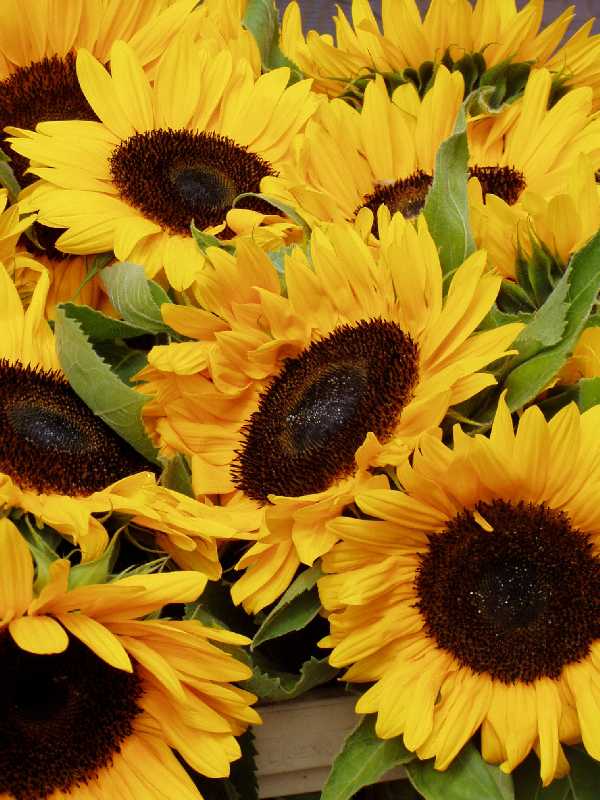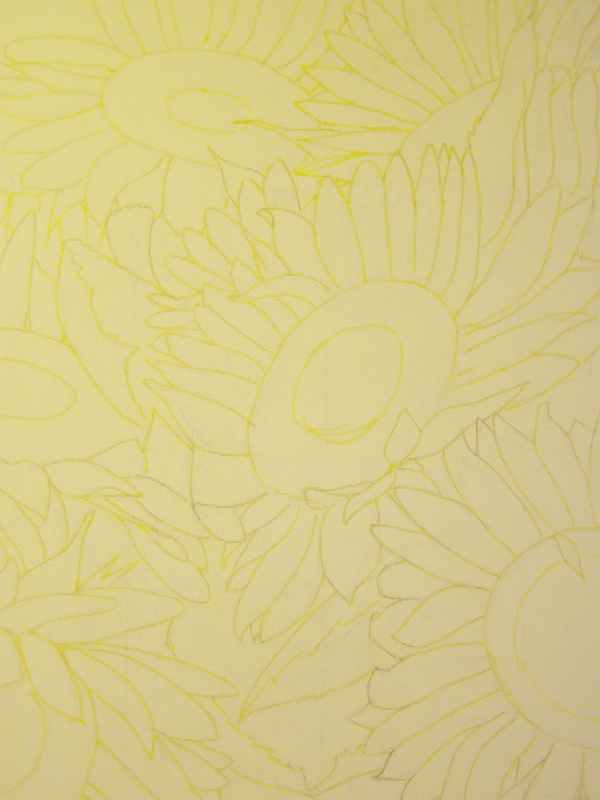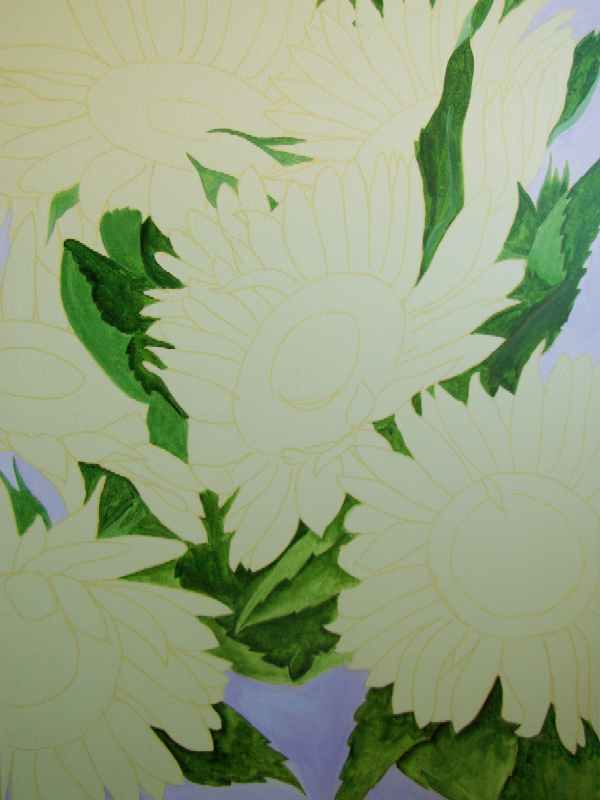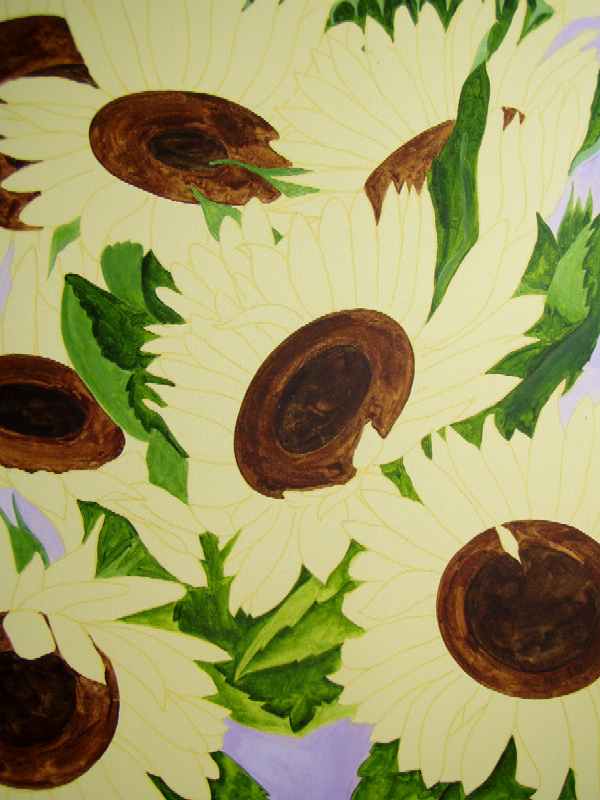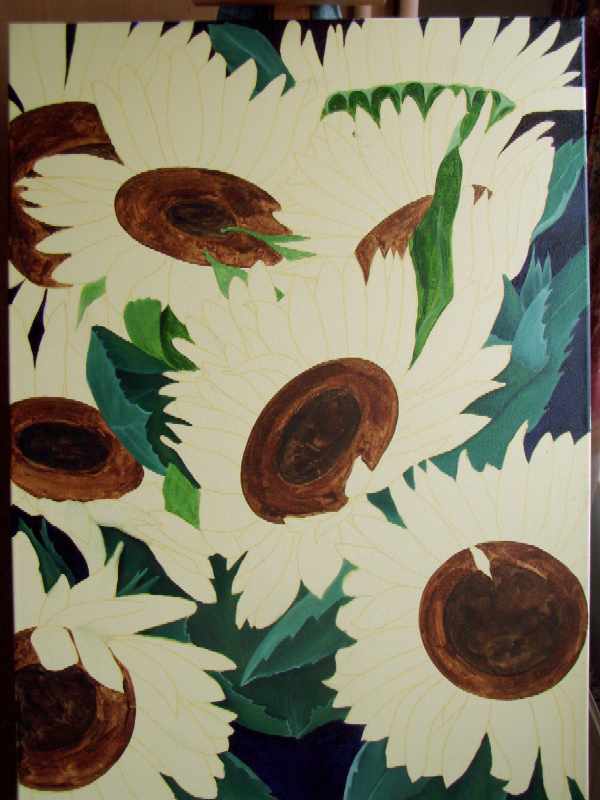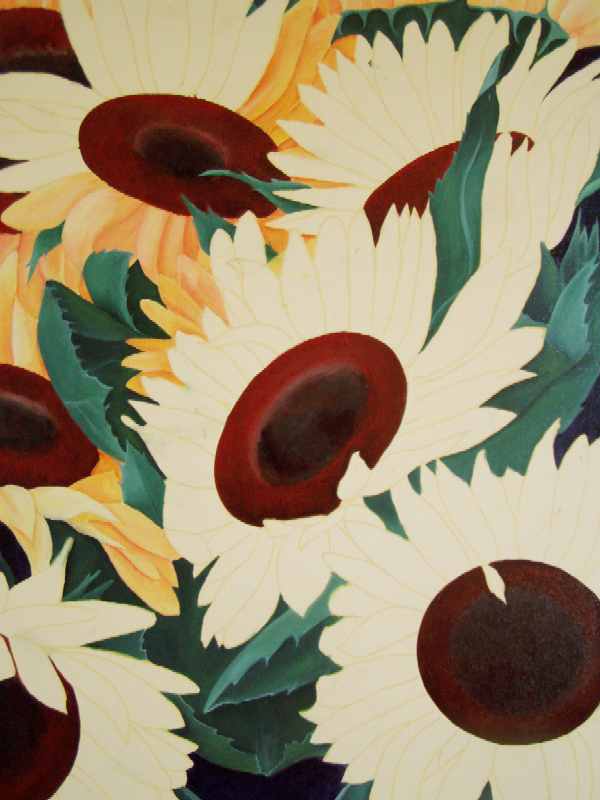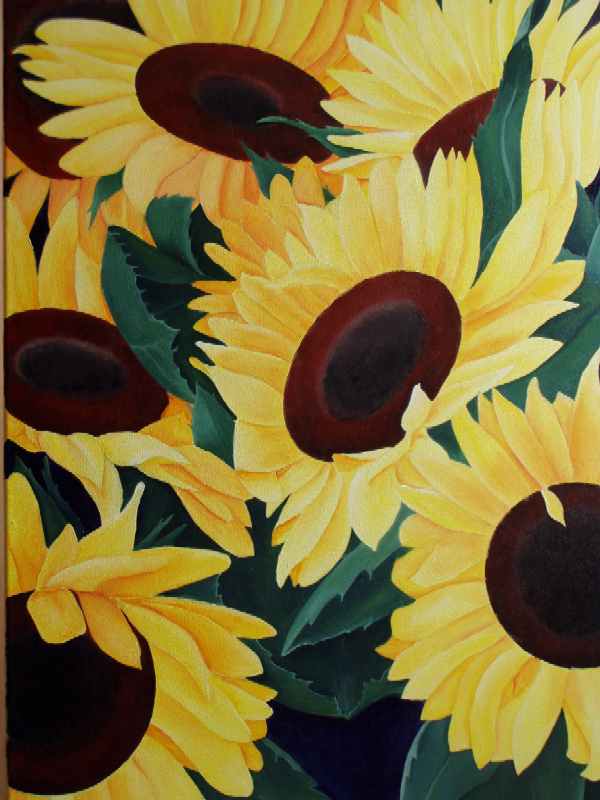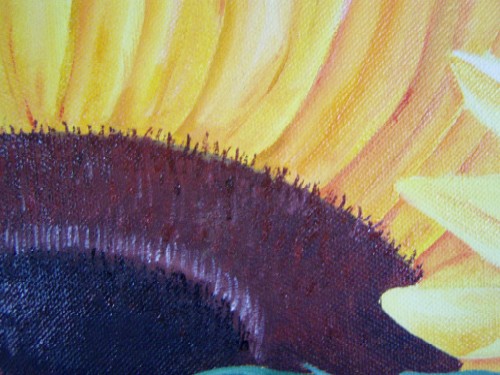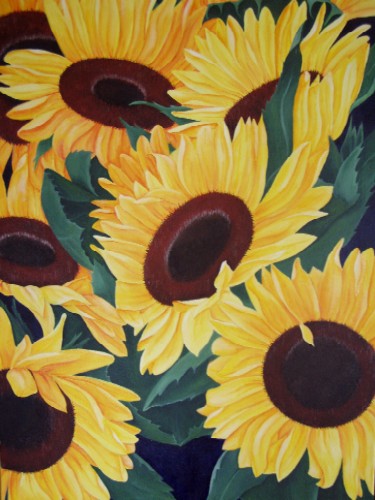| First, I'll give the entire canvas a light yellow color using gesso mixed with lemon yellow. I don't find it enjoyable to start on a white canvas, and besides, with yellow as a background, I can better see how the other colors will come out later. After coloring the entire canvas, I'll transfer the photo using a grid. Since the photo I printed out and the canvas don't match exactly in size, it's a bit of a puzzle. |
| After tracing everything with a pencil and being satisfied with the sketch, I'll go over all the lines with a yellow marker. Pencil can create dirty and gray spots in the paint, so after tracing with a marker, I'll erase all the pencil lines, including the grid. |
| Now I'll start with the underpainting. I'll color the parts with acrylic paint. I won't add any detail yet, but I'll clearly define what is leaf, flower, or background by painting them in the correct color. For the background, I'll use zinc white with some dioxazine purple. I won't stick exactly to the photo, as you can see. I'll partially adjust it to my own preferences. |
| For the leaves, I'll use sap green, with some zinc white for the lighter parts. I won't paint the yellow of the flowers again, as I already did that when I painted the entire canvas yellow. |
| After the leaves, I'll start with the hearts of the flowers. Essentially, these are two circles overlapping. The smaller one in the middle is slightly lighter in color. I'll indicate this difference in the underpainting as well. I'll use burnt umber and mars black for this. With oil paint, I need to work neatly from back to front, but for now, I'm going color by color. |
| Once the acrylic layer is done, I'll move on to the next phase, using oil paint. Now I need to consider fat over lean and work from back to front. So, the first thing I'll paint is the background. I want it slightly darker than the acrylic color. I'll mix a purple from alizarin crimson and phthalo blue. With this color, I'll paint over the background previously painted purple with acrylics. This color is much darker, and I like it much better. |




